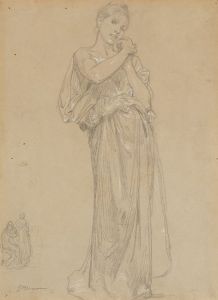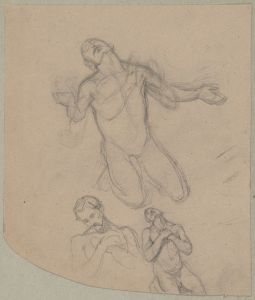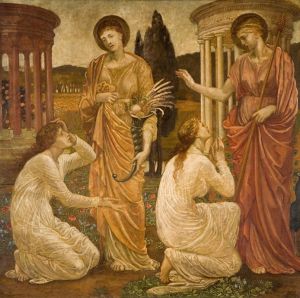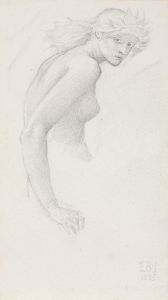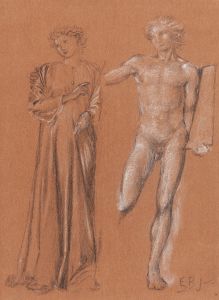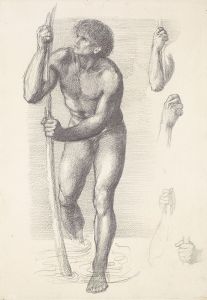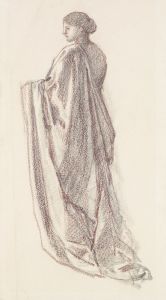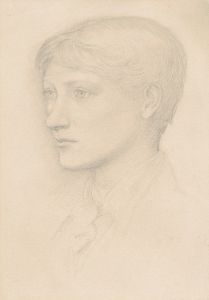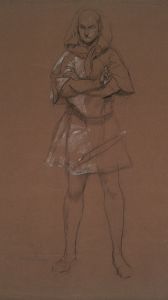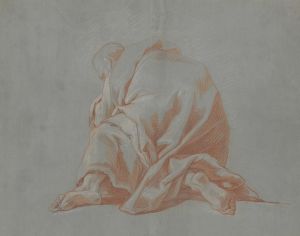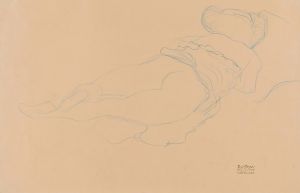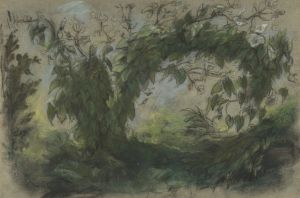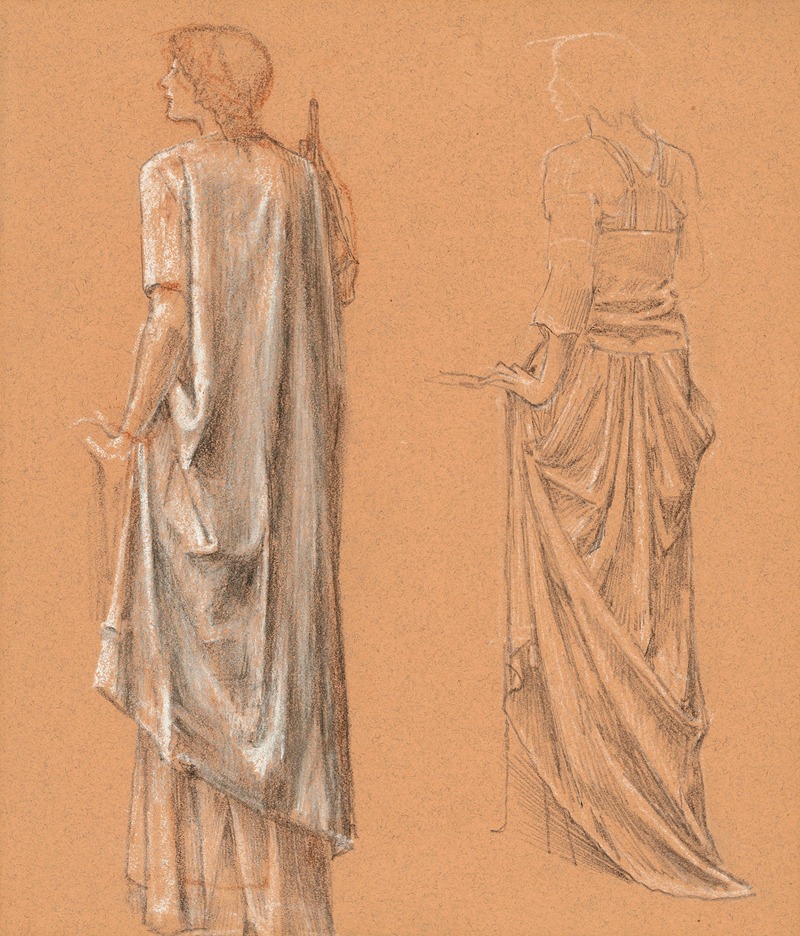
Study of a draped female figure, with a subsidiary study of the same, for ‘The Sleep of Arthur in Avalon’
A hand-painted replica of Sir Edward Coley Burne-Jones’s masterpiece Study of a draped female figure, with a subsidiary study of the same, for ‘The Sleep of Arthur in Avalon’, meticulously crafted by professional artists to capture the true essence of the original. Each piece is created with museum-quality canvas and rare mineral pigments, carefully painted by experienced artists with delicate brushstrokes and rich, layered colors to perfectly recreate the texture of the original artwork. Unlike machine-printed reproductions, this hand-painted version brings the painting to life, infused with the artist’s emotions and skill in every stroke. Whether for personal collection or home decoration, it instantly elevates the artistic atmosphere of any space.
"Study of a Draped Female Figure, with a Subsidiary Study of the Same, for ‘The Sleep of Arthur in Avalon’" is a preparatory drawing by the British artist Sir Edward Coley Burne-Jones (1833–1898). This artwork is a study for Burne-Jones's monumental painting The Sleep of Arthur in Avalon, which is considered one of his most ambitious and significant works. The study reflects Burne-Jones's meticulous approach to composition and detail, as he often created numerous preparatory sketches and studies before completing a final painting.
The drawing depicts a draped female figure, rendered with delicate lines and a focus on the folds and flow of the fabric. A subsidiary study of the same figure is included, showcasing Burne-Jones's exploration of posture and drapery. This preparatory work demonstrates his commitment to achieving harmony and balance in his compositions, as well as his interest in the interplay between the human form and the surrounding elements.
The Sleep of Arthur in Avalon was inspired by Arthurian legend, a recurring theme in Burne-Jones's oeuvre. The painting portrays the legendary King Arthur in a state of eternal rest on the mythical island of Avalon, surrounded by attendants. The draped female figure in this study is likely one of the attendants depicted in the final painting. Burne-Jones's fascination with medieval themes and his association with the Pre-Raphaelite Brotherhood are evident in both the preparatory drawing and the completed work.
The study is executed in pencil and showcases Burne-Jones's skill in capturing the subtleties of the human form and fabric. It serves as a testament to his artistic process and his dedication to creating highly detailed and evocative imagery. The exact date of the drawing is not specified, but it was likely created during the late 19th century, as Burne-Jones worked on The Sleep of Arthur in Avalon intermittently from 1881 until his death in 1898.
This preparatory drawing is an example of Burne-Jones's broader artistic practice, which often involved extensive planning and refinement. His works are characterized by their dreamlike quality, intricate detail, and a sense of timelessness, all of which are evident in this study. The drawing is held in a collection, though specific details about its current location or provenance are not provided in available records.





